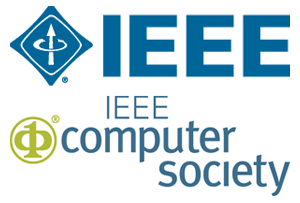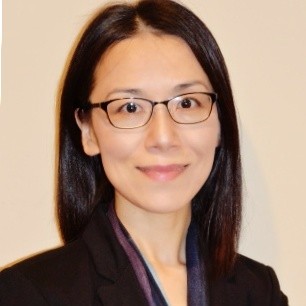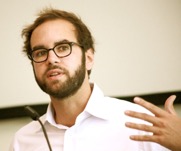
IEEE MIPR 2019
San Jose, California, USA
March 28-30, 2019
Innovation Forums: The Imminent Trends of Video Compression

- Moderator: Shan Liu
- Vice President and General Manager of Media Lab at Tencent Holdings Limited
- Abstract:
- Following the success of HEVC (High Efficiency Video Coding) a video coding standard which was recognized by the Emmy Engineering Award in October 2017, ISO/IEC and ITU-T jointly launched a new standardization project to capture both the rapidly growing market needs and newly developed video compression technologies. The new draft standard VVC (Versatile Video Coding) not only explores video coding tools along the conventional path, but also encourages studies on utilizing new elements, such as neural networks in video compression. This talk will look into the recent work on neural video compression for the next video compression standard and discuss the opportunities as well as challenges.
- Biography:
-
Shan Liu is a Distinguished Scientist, Vice President and General Manager of Media Lab at Tencent Holdings Limited. Prior to joining Tencent she held senior management and technical positions at various companies including MediaTek, Mitsubishi Electric Research Laboratories, Sony Electronics and Sony Computer Entertainment America, etc. Dr. Liu is the inventor of more than 200 US and global patent applications and the author of more than 40 journal and conference articles. Many of her inventions have been adopted by international standards such as ITU-T H.265 | ISO/IEC HEVC, MPEG-DASH and OMAF, as well as utilized in widely sold commercial products. She has chaired and co-chaired a number of ad-hoc and technical groups through standard development and served as co-Editor of Rec. ITU-T H.265 v4 | ISO/IEC 23008-2:2017. She has been in technical and organizing committees, or an invited speaker, at various international conferences such as IEEE ICIP, VCIP, ICNC, ICME and ACM Multimedia. She served in Industrial Relationship Committee of IEEE Signal Processing Society 2014-2015 and was appointed the VP of Industrial Relations and Development of Asia-Pacific Signal and Information Processing Association (APSIPA) 2016-2017. Dr. Liu obtained her B.Eng. degree in Electronics Engineering from Tsinghua University, Beijing, China and M.S. and Ph.D. degrees in Electrical Engineering from University of Southern California, Los Angeles, USA.

- Jim Bankoski
- Director at Google
- Abstract:
- Google invests heavily in media compression research. Many of the teams working on compression at Google use machine learning to achieve better or faster compression. This talk will explore this work and discuss topics ranging from the use of simple machine learning techniques for optimization to research in full auto encoders. It will cover topics that cover image, video and audio compression efforts.
- Biography:
-
Jim Bankoski is a Distinguished Engineer at Google responsible for Chrome's video, audio, mesh and image compression efforts. He is the former CTO of On2 Technologies and a technical contributor to all of On2 / Google's video codecs from Tm2x through VP9 and AV1.

- Benjamin Bross
- Project Manager at the Video Coding & Analytics Department
of the Fraunhofer Institute for Telecommunications - Heinrich Hertz Institute, Berlin
- Abstract:
- Compressed video data are growing at a faster rate than ever before. Already today, video data make up by far the highest percentage of bits on the Internet and in mobile traffic. This demonstrates the need for even more efficient compression which goes beyond the current state of the art High Efficiency Video Coding standard (HEVC). In order to master this demanding challenge, the ITU Video Coding Expert Group (VCEG) and the ISO/IEC Moving Pictures Expert Group (MPEG) have already started working together in the Joint Video Experts Team (JVET). Last October, JVET issued a call for proposals for video coding technology beyond HEVC. Submissions from 33 organizations were showing 40% or more bitrate savings in terms of PSNR over HEVC and all submissions have been proven superior in terms of subjective quality as well. This kicked off the development of the next joint video coding standard called Versatile Video Coding (VVC). Most promising among the proposed video coding technologies have been incorporated in the current VVC draft are while others are still under investigation. While VVC is expected to be finalized 2020, this talk gives an overview of the latest video coding technology included in the current VVC draft.
- Biography:
-
Benjamin Bross is a Project Manager at the Video Coding & Analytics Department of the Fraunhofer Institute for Telecommunications - Heinrich Hertz Institute, Berlin and a part-time lecturer at the HTW University of Applied Sciences Berlin. Since the development of the H.265 | MPEG-H High-Efficiency Video Coding (HEVC) Standard, which started in 2010, Benjamin was very actively involved in the standardization process as a technical contributor and coordinator of core experiments. In July 2012, Benjamin was appointed as a co-chair of the editing Ad Hoc Group and became the chief editor of the HEVC video coding standard. At the Heinrich Hertz Institute, he is currently responsible for the development of HEVC encoder- and decoder software as well es investigating new video coding techniques for the emerging Versatile Video Coding (VVC) standard. Besides giving talks about recent video coding technologies, Benjamin Bross is an author or co-author of several fundamental HEVC-related publications, and an author of two book chapters on HEVC and Inter-Picture Prediction Techniques in HEVC. He received the IEEE Best Paper Award at the 2013 IEEE International Conference on Consumer Electronics – Berlin in 2013, the SMPTE Journal Certificate of Merit in 2014 and an Emmy Award at the 69th Engineering Emmy Awards in 2017 as part of the Joint Collaborative Team on Video Coding for its development of HEVC.

- Scott Janus
- Principle Engineer at Intel
- Abstract:
- The MPEG-I activity includes multiple projects related to Immersive Media, including 3 DoF+, which extends 360-degree 3 Degree of Freedom (Dof) video to add support for head-scale motion parallax. 3DoF+ provides a form of limited range 6 DoF video, where viewers can view content from any (X, Y, Z) position and any (yaw, pitch, roll) orientation with a limited range. The MPEG-I 3DoF+ project utilizes the HEVC codec to code texture plus depth from multiple nearly spaced cameras, plus view interpolation to form intermediate views. An update will be provided of the latest activities in the 3DoF+ project, including a planned Call for Proposals.
- Biography:
-
Scott Janus is a Principal Engineer at Intel where he leads the Media Software Architecture Team. Over the past two decades, he has designed many video features on the billions of PCs and laptops using Intel graphics. Recent examples include 4K and HDR premium video streaming. Currently he is researching emerging immersive media technologies. He is an author of multiple books on video and audio technologies. He holds over 20 granted patents.

- Ali Tabatabai
- Consultant and technical advisor for Sony US Research Center and Sony Tokyo R&D HQ
- Abstract:
- The emergence of digital TV is followed by ever-expanding efforts toward creating higher visual quality contents with lifelike sense of realism. These include development of higher spatial/temporal resolution (HD -> 4K -> 8K)/(30 -> 240 frame rate), higher color contrast and dynamic range (HDR) and multi-view stereo capture and display devices. In addition and in parallel efforts are being made toward direct capture and volumetric display of geometry and texture of 3D data points for a fully immersive and interactive experience (VR/AR/MR , 2.5 DoF -> 6 DoF). These industry trends have in turn been the key factor driving the development of 2D/3D video compression standards such as AVC/H.264, HEVC/H.265 and MVC as well as ongoing versatile video coding (VVC) and point cloud compression (PCC) activities. In this presentation we will briefly review these activities and point out the common characteristics and differences between traditional image based 2D/3D vs. geometry and texture based coding approaches. Finally, some thoughts about trends for future video compression technology direction will be presented.
- Biography:
-
Ali Tabatabai is currently a consultant and technical advisor to Sony US Research Center and Sony Tokyo R&D HQ. In his last position as a VP at Sony US Research Center he was responsible for research activities related to VR/AR capture and processing, camera signal processing and next generation video compression technologies. He was appointed as a Sony DE (Distinguished Engineer), a prestigious designation assigned to a very limited number of Sony worldwide employees, during 2016 – 2017. Before joining Sony he worked at Tektronix Laboratories and Bellcore/Bell Laboratories, respectively. Dr. Tabatabai is a Fellow of the IEEE and he has received many professional awards for his contributions to video coding standardization activities. He is the author and co-author of more than 60 awarded patents. He has also served as associate and guest editor of IEEE Trans. on Circuits and Systems for Video Technology (CSVT) and he is past chair of picture coding symposium (PCS).




